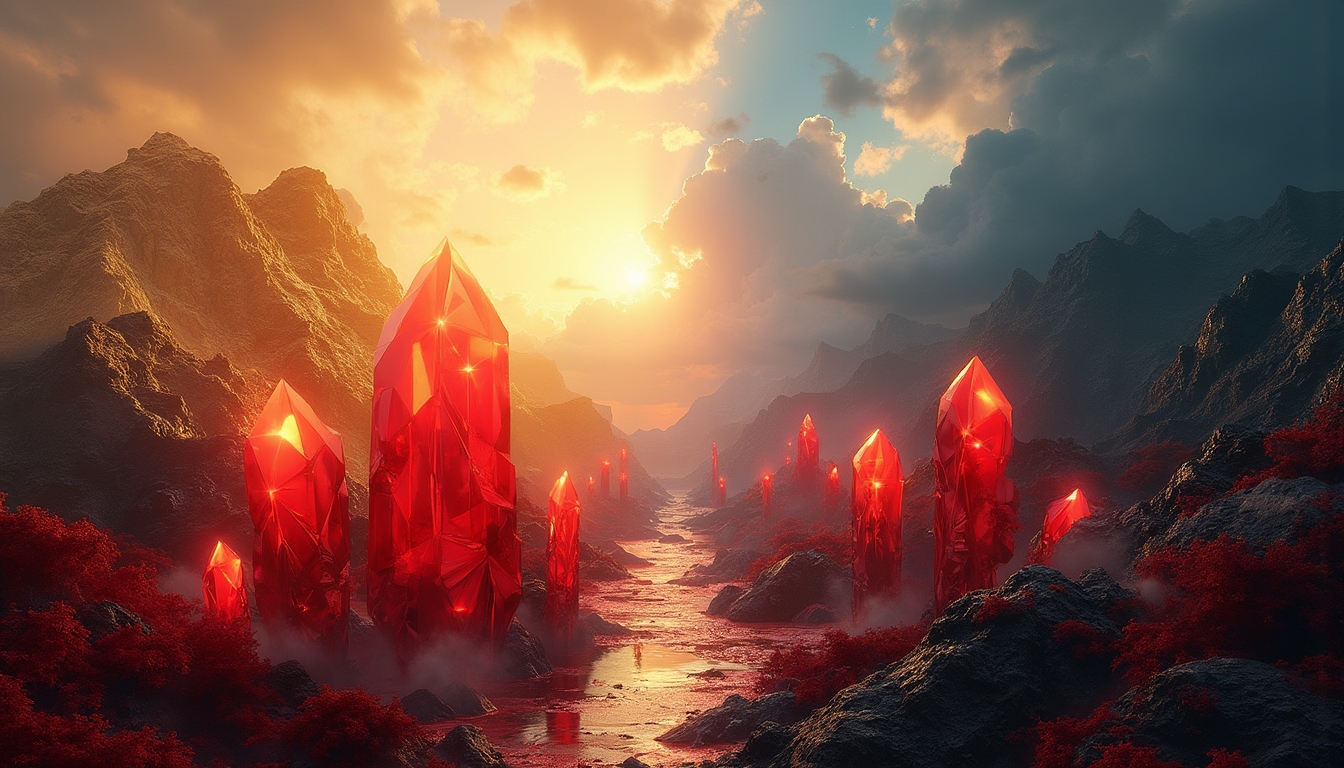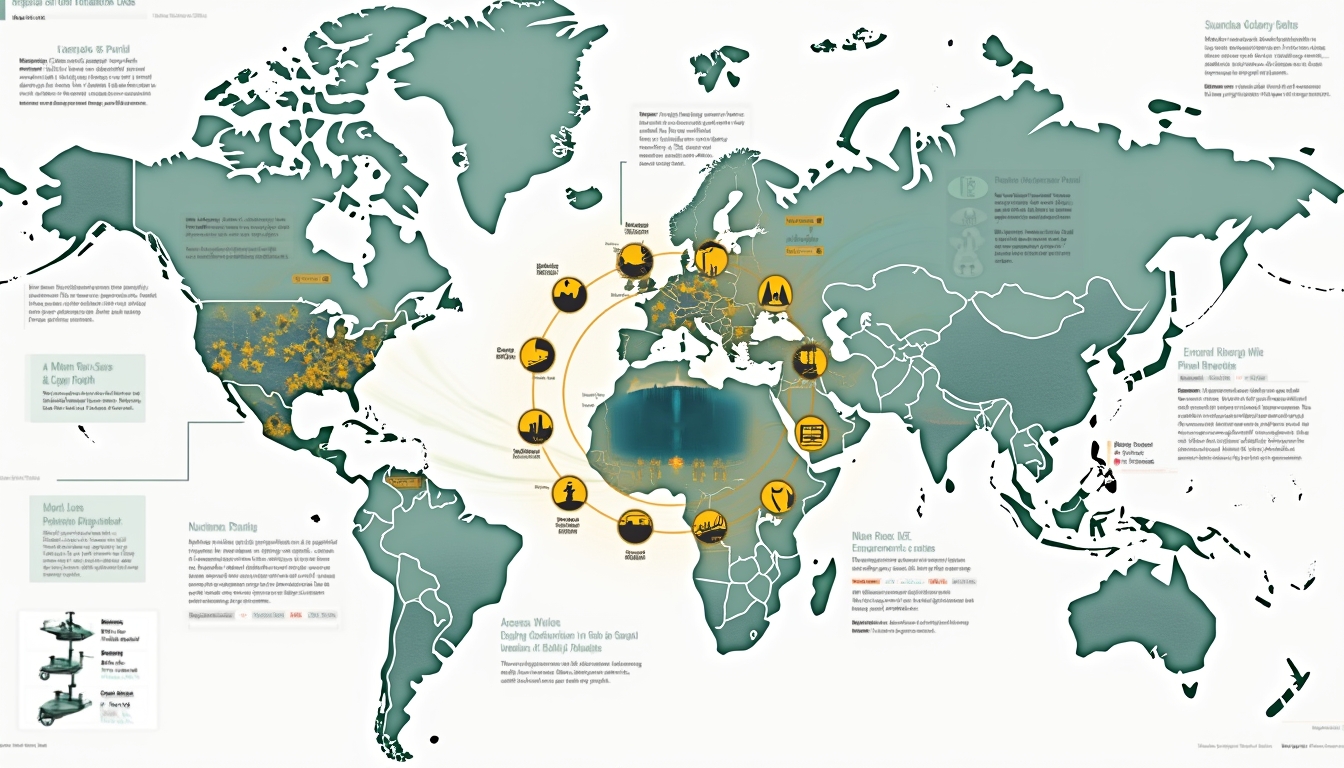The Evolution of Global Uranium Production: A Comprehensive Overview
Uranium production trends and challenges have long influenced global energy policies and strategic resource management. The industry’s evolution is shaped by technological innovations, shifting geopolitics and market demand. For a detailed perspective, consult a global production guide. Numerous studies, including the uranium markets overview, reveal industry complexities.
Global uranium production has grown from simple mining operations into a sophisticated global industry. The interplay of military demand, civilian energy consumption, and environmental regulations created unique trends and challenges. These developments continue to inform strategies and investment decisions—key aspects of uranium production trends and challenges.
What Drove Uranium Production in the Early Years?
The early uranium production landscape was defined by the Cold War and the emergence of civilian nuclear power. From 1945 to 1970, military requirements heavily dictated production levels. Approximately 90% of uranium was diverted to nuclear weapons programmes, influencing the industry’s trajectory.
Key Historical Developments:
- The Manhattan Project established initial exploration protocols.
- The United States led global prospecting efforts.
- Technological innovations enabled more precise extraction techniques.
Strategic geopolitical considerations led governments to invest significantly in mineral reserve identification. Early mining focused on high-grade deposits with uranium concentrations above 0.3% U₃O₈. This period laid the groundwork for uranium production trends and challenges that persist today.
Advanced extraction methods and rapidly evolving safety protocols set the scene for future innovations. Regulatory frameworks reinforced the need to balance production growth with environmental protection. These early dynamics continue to resonate within modern industry practices.
How Did the Nuclear Industry Transform from the 1970s to 1980s?
Between the 1970s and 1980s, the nuclear industry underwent dramatic transformation. Major incidents such as Three Mile Island (1979) and Chernobyl (1986) had far-reaching effects. Confidence in nuclear energy dipped, influencing public perception and market stability.
Production Landscape Shifts:
- The United States market share fell from 43% to 12%.
- Numerous global reactor projects were cancelled.
- Public trust in nuclear energy was severely eroded.
In response, technological innovations and tighter safety standards emerged. Radiation exposure standards in mining operations improved dramatically, falling from over 10 rem/year to less than 2 rem. These shifts highlight the evolving nature of uranium production trends and challenges.
Investors and policymakers began reassessing risk, while broader energy policy debates influenced industry reforms. The subsequent wave of change repositioned uranium production as a balance between supply, demand, and safety standards.
What Technological Innovations Reshaped Uranium Production?
In-situ leaching (ISL) transformed uranium extraction by offering cost efficiency and environmental benefits. The ISL method reduced production costs significantly – from around $60 per lb to nearly $20 per lb. Its adoption made low-grade deposits economically viable to exploit.
Technological Breakthroughs:
- ISL achieves recovery rates of 75–95%.
- Surface disruption is considerably minimised.
- Precise chemical dissolution techniques improve extraction efficiency.
Kazakhstan’s rapid expansion in uranium mining is a prime example. By adopting ISL early on, production increased by an extraordinary 18,000% between 1991 and 2021. Innovations in this area have not only affected production costs but have also contributed to evolving uranium production trends and challenges.
The impact of these methods is evident in global research. The evolution of extraction techniques continues to influence the uranium production cycle, particularly when balancing environmental stewardship with industrial growth.
How Did Global Events Impact Uranium Production from 2000-2022?
Global events from 2000 to 2022 significantly disrupted uranium production. The Fukushima nuclear disaster in 2011 caused demand to fall by approximately 13%. Similarly, the COVID-19 pandemic led to temporary halts in nearly 15% of global output, underlining the vulnerability of supply chains.
Key Disruption Factors:
- Geopolitical instability in key producing regions.
- Pandemic-induced challenges in supply chains.
- Shifts in global energy policies.
These external shocks forced industry stakeholders to adopt more resilient and adaptive strategies. Uranium production trends and challenges during this period helped spur investments in safety and modernisation. This era also saw increased academic and market research dedicated to improving system robustness.
Governments and companies alike began investing in novel extraction and safety technologies. Despite these disruptions, the underlying demand for uranium has maintained momentum, influencing both the present state and future prospects of the sector.
Top Uranium Producing Nations in 2022
A snapshot of global production in 2022 illustrates a diverse landscape. Notable countries include Kazakhstan, Canada, Namibia, Australia, and Uzbekistan. Each plays a distinct role in the global uranium market, contributing unique resources and expertise.
Global Production Breakdown:
- Kazakhstan – 43% of world production; holds 12% of global reserves.
- Canada – 15% production; noted for high-grade deposits.
- Namibia – 11% production; an emerging market.
- Australia – 8% production; maintains stable output.
- Uzbekistan – 7% production; expanding its mining capacity.
Namibia, for example, continues to grow its market presence. Recent regulatory reforms, akin to those seen in namibia's illegal lithium mining activities, highlight the progressive shifts in resource development and adherence to environmental guidelines.
The table of nations underlines how different policies and resource endowments shape uranium production trends and challenges on a global scale.
What Challenges Confront the Uranium Production Industry?
Despite technological progress, significant challenges remain. Complex environmental considerations, high water usage and lengthy permitting processes slow production growth. The inherent challenges of uranium extraction persist, shaping modern industry practices.
Key Challenges:
- Extraction can require 500–1,000 tons of water per uranium ton mined.
- Permitting processes can extend from 10 to 15 years.
- Strict environmental and safety regulations impose additional constraints.
These challenges drive the need for innovation and improved regulatory frameworks. Uranium production trends and challenges, such as these, continue to demand coordinated efforts between governments, industry experts and environmental advocates.
Investors must navigate extended timelines and high capital costs. Mitigation strategies, including the implementation of advanced water recycling techniques and streamlined regulatory procedures, are essential. This dynamic landscape necessitates continuous research into mitigating technical and bureaucratic obstacles.
What Does the Future Hold for Uranium Production?
The outlook for uranium production remains promising despite persistent challenges. The International Atomic Energy Agency forecasts an 82% growth in nuclear capacity by 2040. This expansion highlights both opportunities and risks inherent in uranium production trends and challenges.
Emerging Opportunities:
- Adoption of advanced extraction technologies.
- Increased focus on sustainable and low-impact mining practices.
- Growing interest in low-carbon energy solutions through small modular reactors (SMRs).
Projects in locations like Madagascar illustrate this forward momentum. Emerging ventures such as the madagascar critical minerals project are spearheading innovations that could reshape local economies and global markets.
Investors are increasingly guided by robust data, as described in a comprehensive mining market analysis. This analysis evaluates both the economic potential and the inherent risks related to high water usage and regulatory delays.
Furthermore, recent studies provide market dynamics insights. These insights offer a broad perspective on future investment opportunities and potential policy shifts. Additional research into sustainable mining practices further solidifies confidence in the industry’s long-term viability.
In summary, uranium production trends and challenges will continue to influence global energy policy. Modern extraction techniques, coupled with dynamic geopolitical factors, create an industry that is both resilient and vulnerable. By embracing innovative practices and meticulous planning, stakeholders can harness opportunity amid persistent challenges.
With global nuclear capacity poised for substantial growth, industry experts anticipate that increased research and technological advancements will ultimately lead to more efficient and environmentally sustainable uranium extraction practices. Policymakers and investors alike must remain agile, balancing industry needs with future sustainability imperatives—ensuring the sector evolves responsibly into the future.
Ready to Unlock Uranium Investment Opportunities?
Discover the power of AI-driven insights with Discovery Alert's real-time notifications, designed to help investors navigate the complex world of uranium production and exploration. Start your 30-day free trial today and gain access to cutting-edge analysis that simplifies mineral investing for both new and experienced investors.







